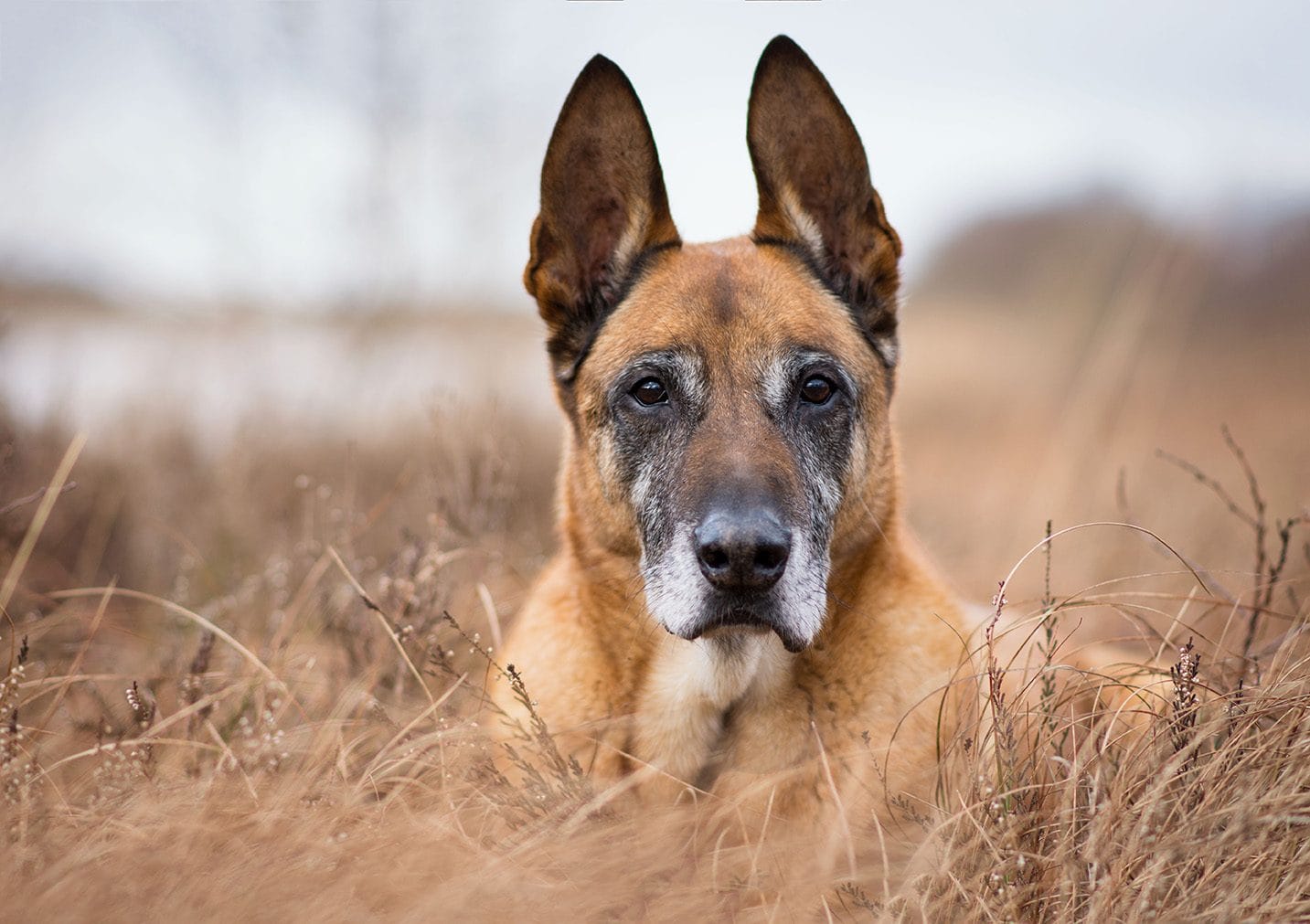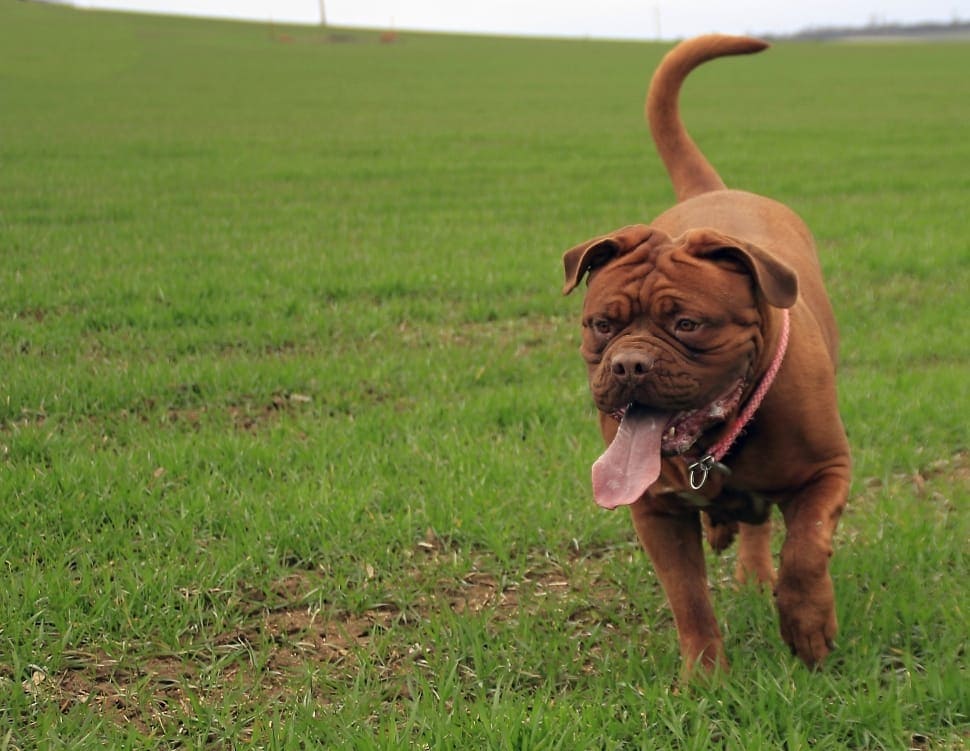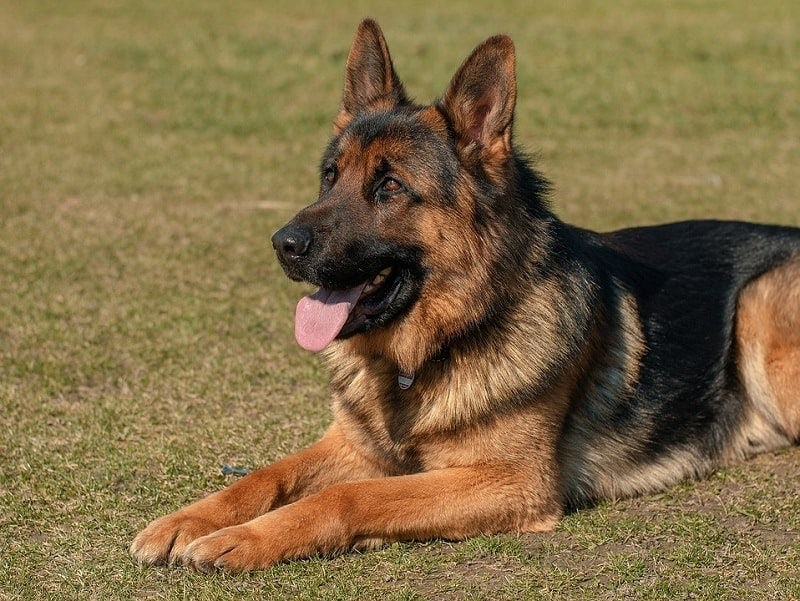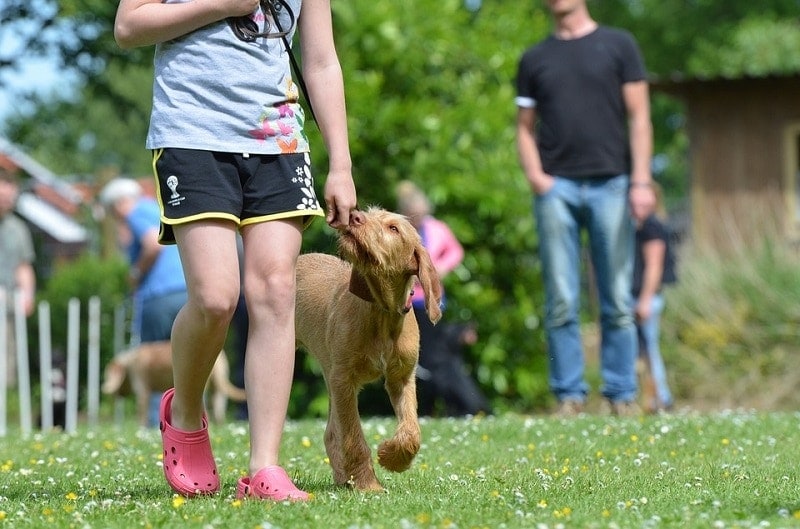15 Military Dog Breeds (With Pictures)

Updated on

In November of 2019, a military service dog made international headlines when he was honored as a hero by President Donald Trump at the White House. Conan, a Belgian Malinois, was honored for assisting a U.S. Special Forces team in tracking down and killing ISIS leader Abu Bakr al-Baghdadi in Syria.
While the full details of the role that Conan played in the mission will likely never be released, this public praise from the President gave the nation a rare glimpse at one of the important tasks that military working dogs play in modern warfare.
Yet, using dogs to assist the military is far from new, with accounts of dogs being used for such purposes going as far back as 600 B.C., to a battle in ancient Greece between Alyattes, King of Lydia, and the Cimmerians.
Over the centuries, military working dogs have been used in many different roles, including as attack dogs, communications dogs, sentries, mascots, detection and tracking dogs, and controversially, for medical research. Contemporary military working dogs are often deployed as guard dogs, for drug and explosive detection, as patrol dogs, and in military law enforcement roles.
While the German Shepherd and Belgian Malinois are the most common breeds of military service dogs today, there have been many different breeds of dogs working for the military over the years.
Here’s an alphabetical list of 15 military dog breeds, including army dog breeds and other types of military dogs.
Top 15 Military Dog Breeds:
1. Airedale Terrier

Though no longer used as a military working dog, the Airedale Terrier was one of the most common breeds used by the British military in World War I.
These tough and loyal dogs were trained as communication dogs and were tasked with carrying messages back and forth across the battlefield. They did this by being trained to work with two handlers, one of whom would be sent to the front lines and the other remained behind in the command position. When a message needed to be sent, it was attached to the dog’s collar and carried to the second handler by the Airedale Terrier.
These dogs were renowned for their ability to stay low and out of sight, their speed, and their devotion to duty. In the days before reliable mobile radio, they were an essential component of the British military’s command and communication system.
2. Alaskan Malamute

Alaskan Malamutes saw service with the U.S. Military in World War II as sled and pack dogs and were used to haul military equipment and supplies over harsh snow-covered terrain. Some also made a name for themselves as rescue dogs that could be sent out to search a battlefield to find survivors in need of military aid.
When not being actively employed in either of these roles, the Malamute was also a great alarm dog and early warning system and saved more than a few American lives by warning U.S. troops about the presence of enemy soldiers.
3. Belgian Malinois

The Belgian Malinois is one of four varieties of Belgian Shepherds and one of the most popular dogs used by the military today. At first glance, they have a similar look to their close relative, the German Shepherd, and like them are brave, loyal, and highly intelligent dogs. The Belgian Malinois is a slightly smaller dog than the German Shepherd, making them more suitable for traveling in military vehicles and parachuting or rappelling into operational areas with their handlers.
The Belgian Malinois is also highly regarded for their exceptionally quick reaction time, fearless dedication to duty, and strong protective instinct.
4. Belgian Sheepdogs

Like the Belgian Malinois, the all-black Belgian Sheepdog (also known as the Groenendael) is a variety of Belgian Shepherd. Although anatomically identical dogs, the Belgian Sheepdog is no longer typically used as a military working dog due to their long, thick coats that make them less suited to the role than the Malinois with their short, low-maintenance tan and brown coats.
The Belgian Sheepdog did, however, see service in World War I as ambulance dogs and messengers and again as war dogs in World War II.
4. Boxer

Smart, independent, and playful, Boxers were once a go-to dog when the military needed a communications dog. Much like the Airedale Terrier, the Boxer was trained to work with two handlers, running messages back and forth across the battlefield in the days before reliable mobile radio communications.
The Boxer has also been used in military search-and-rescue roles and as explosive-detector dogs.
5. Bouvier des Flanders

The Bouvier des Flanders is a large farm dog that was originally bred in an area of Western Europe that now encompasses parts of Belgium, Frances, and the Netherlands. They became convenient war dogs for the Belgium Army following the onset of World War I, when much of Belgium’s farming land became a battlefield.
Until that point, the Bouvier des Flanders had been a popular general farming dog. In the dark days of the war, they became notable military stretcher-bearers and were employed to pull supply carts and as trackers.
While their first military service was more by convenience than design, the Bouvier des Flanders proved to be a natural at the role. The breed still serves as a general-purpose patrol dog with the Belgian military to this day.
6. Bulldog

The Bulldog is a medium-sized dog that was bred originally to drive cattle and to compete in bullbaiting. Yet, despite their violent and bloody ancestry, Bulldogs have long since been bred to be calm and affectionate dogs. For this reason, their military service has been more in a support role than as a battlefield dog.
For many years, the Bulldog has been the mascot of the United States Marine Corps, and they have also recently found use as companion dogs helping wounded U.S. service members recovering from their injuries.
7. Doberman Pinscher

The loveable Doberman Pinscher is another large and easily trainable dog that has seen considerable service as a military working dog. Over the years, the Doberman has served with the U.S. military in both World War I and World War II.
Although employed manly as guard dogs, Dobermans were also trained to find and rescue wounded soldiers, to act as messengers, and to be patrol dogs employed to detect enemy locations and mines.
The Doberman has fallen out of favor as a military dog in modern times, as they are not as suited to all weather conditions like the German Shepherd, Belgian Malinois, and Dutch Shepherd are.
8. Dutch Shepherd

Dutch Shepherds are growing in popularity as a military service dog and together with the German Shepherd and Belgian Malinois, round out the top three dog breeds currently used by the U.S. military.
Dutch Shepherds are similar in size and appearance to the German Shepherd and are often mistaken for the more popular breed. Yet, they are an individual breed, and these hard-working, loyal, and extremely active dogs are making a name of themselves as both general patrol and explosive-detection dogs.
9. German Shepherd

The German Shepherd is by far the most common dog found in military service. Highly intelligent, strong, agile, and easy to train, these large dogs are naturally moderately aggressive but are highly protective and can certainly ramp up the aggression when required. More importantly, they are also able to adapt to almost any climatic condition.
While some other dog breeds exhibit many of these traits, none exhibit all of them as consistently as the German Shepherd.
10. Giant Schnauzer

Once a virtually unknown breed outside Bavaria, the Giant Schnauzer was originally bred as a farm dog but gained popularity as a military dog during World War I and World War II. Somewhat inexplicably, after World War II, Giant Schnauzers were not used for military service until 1980 when the U.S. Airforce introduced them again as bomb-detection dogs.
While still not a popular bred of working dog, a U.S. Airforce Giant Schnauzer named Brock was part of President Trump’s security detail during his trip to Hamburg for the G20 summit in 2017.
11. Irish Terriers

During World War I, Irish Terriers were employed as communications dogs by allied troops and were also used to great effect as rat catchers and companion dogs to troops in the trenches on Belgian and French fronts.
Catching rats may sound like a trivial task, particularly given everything that was going on at the time, but these rodents were a huge problem for the troops. Rats, unlike the troops, loved life in the trenches and quickly bred in huge numbers, sapping morale and generally adding to the misery of the situation. Thus, a solution needed to be found, and it came in the form of the Irish Terrier, a dog that relished the task of killing the rats and served as great morale boosters for the troops.
12. Labrador Retriever

During the Vietnam War, Labrador Retrievers were the U.S. military’s first choice of dog when it came to combat tracking. In this task, Labradors were teamed up with four or five combat troops and sent deep into the jungle to rescue injured troops and find downed airmen. It was a task that the Labrador excelled in, and many American service members owe their lives to the keen noses of those Labrador Retrievers.
Today, Labradors are still used by the military, and they have served with distinction in both Iraq and Afghanistan as explosive-detector dogs.
13. Mastiff

The Mastiff is an exceptionally old breed, and their ancestors likely were some of the first dogs ever used in war. Mastiffs were known to have been used as attack dogs by both ancient Roman and Greek armies, who fitted their dogs with heavy spiked armor and sent them into battle ahead of the troops to attack the enemy.
Today, Mastiffs are not typically used as military dogs. Yet, the tactic of letting a dog loose to chase down and attack an enemy has been adapted to the modern battlefield and is used by certain special forces troops as a method of subduing and capturing an enemy combatant.
14. Rottweiler

Loyal, strong, and obedient, it is little wonder that Rottweilers were used to great effect by the U.S. military during both World War I and World War II as messengers and guard dogs. Employed in much the same way as other messenger dogs, Rottweilers were often tasked with carrying important messages from and to the front lines, and in that way, they had a huge impact on the success of many military operations and battles.
15. Siberian Husky

During World War II, Siberian Huskies saw service with the U.S. military as sled dogs. They were used to haul military goods, vital supplies, and equipment to troops through snowy and icy conditions.
Though not actively used as a military working dog by the United States, they are still being employed in this role by the Russian military.
Conclusion
While we all love and care for our canine friends, few are as heroic and brave as the dogs that serve in the military. Some breeds are far more likely to be used for these specific types of jobs, but that’s only because their unique traits perfectly suit them for the challenging and daunting tasks at hand.
See also:
Featured Image Credit: Africa Studio, Shutterstock










